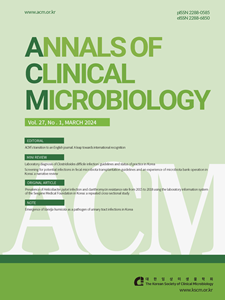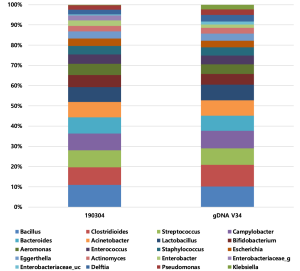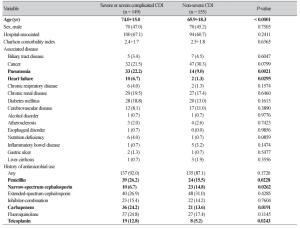Risk of inaccurate species identification by matrix-assisted laser desorption/ionization time-of-flight mass spectrometry and of false carbapenem resistance by automated susceptibility analysis of Enterobacter spp.
Brief communication Young Ah Kim Department of Laboratory Medicine, National Health Insurance Service Ilsan Hospital, Goyang, Korea Corresponding to Young Ah Kim, E-mail: yakim@nhimc.or.kr Ann Clin Microbiol 2024;27(4):267-270. https://doi.org/10.5145/ACM.2024.27.4.6Received on 25 August 2024, Revised on 24 October 2024, Accepted on 10 November 2024, Published on 20 December 2024.Copyright © Korean Society of Clinical Microbiology.This is an Open Access article which is freely available under the Creative Commons Attribution-NonCommercial-NoDerivatives 4.0 International License (CC BY-NC-ND) (https://creativecommons.org/licenses/by-nc-nd/4.0/). Abstract Enterobacter species were isolated from the sputum of an 84-year-old female patient with fever, chills, cellulitis in the right elbow, and pyogenic arthritis in the left shoulder. The bacteria were identified using matrix-assisted laser desorption/ionization time-of-flight mass spectrometry (MALDI-TOF MS) and whole-genome sequencing (WGS). This strain was defined as a carbapenem-resistant Enterobacterales (CRE) by the MicroScan NG MIC 44 panel without applying the revised guidelines of the Korea Disease Control and Prevention Agency properly. MALDI-TOF




